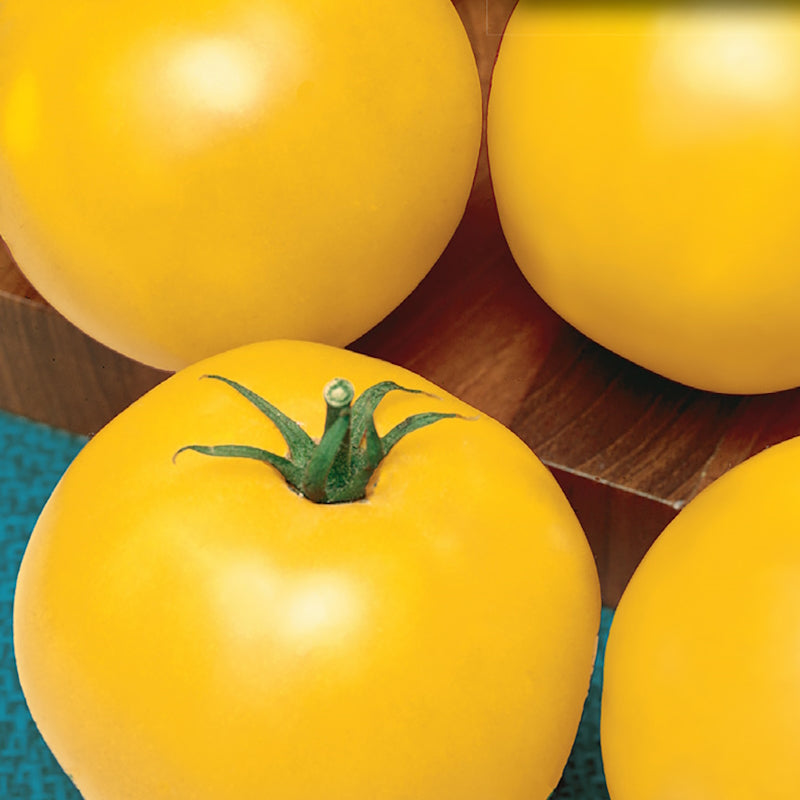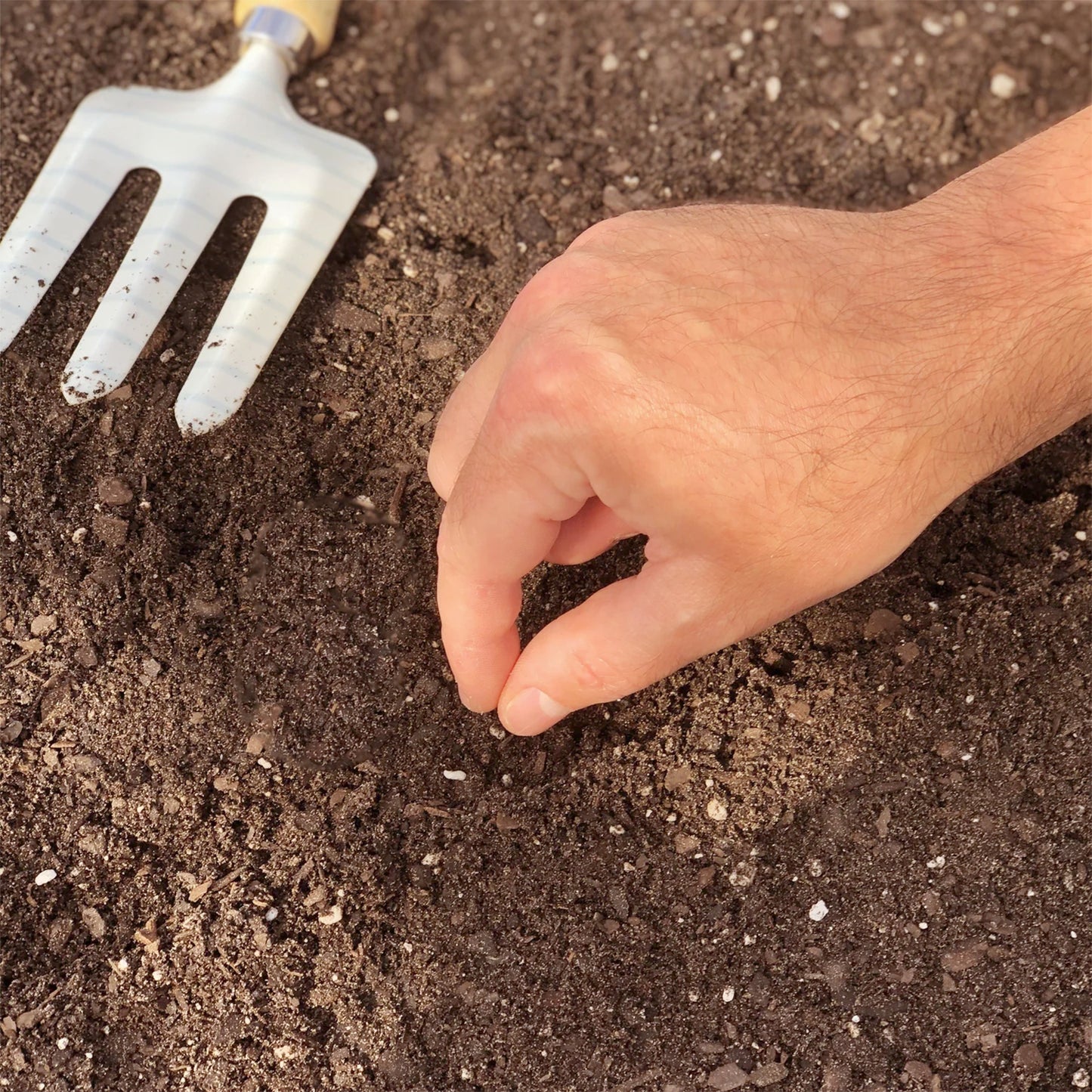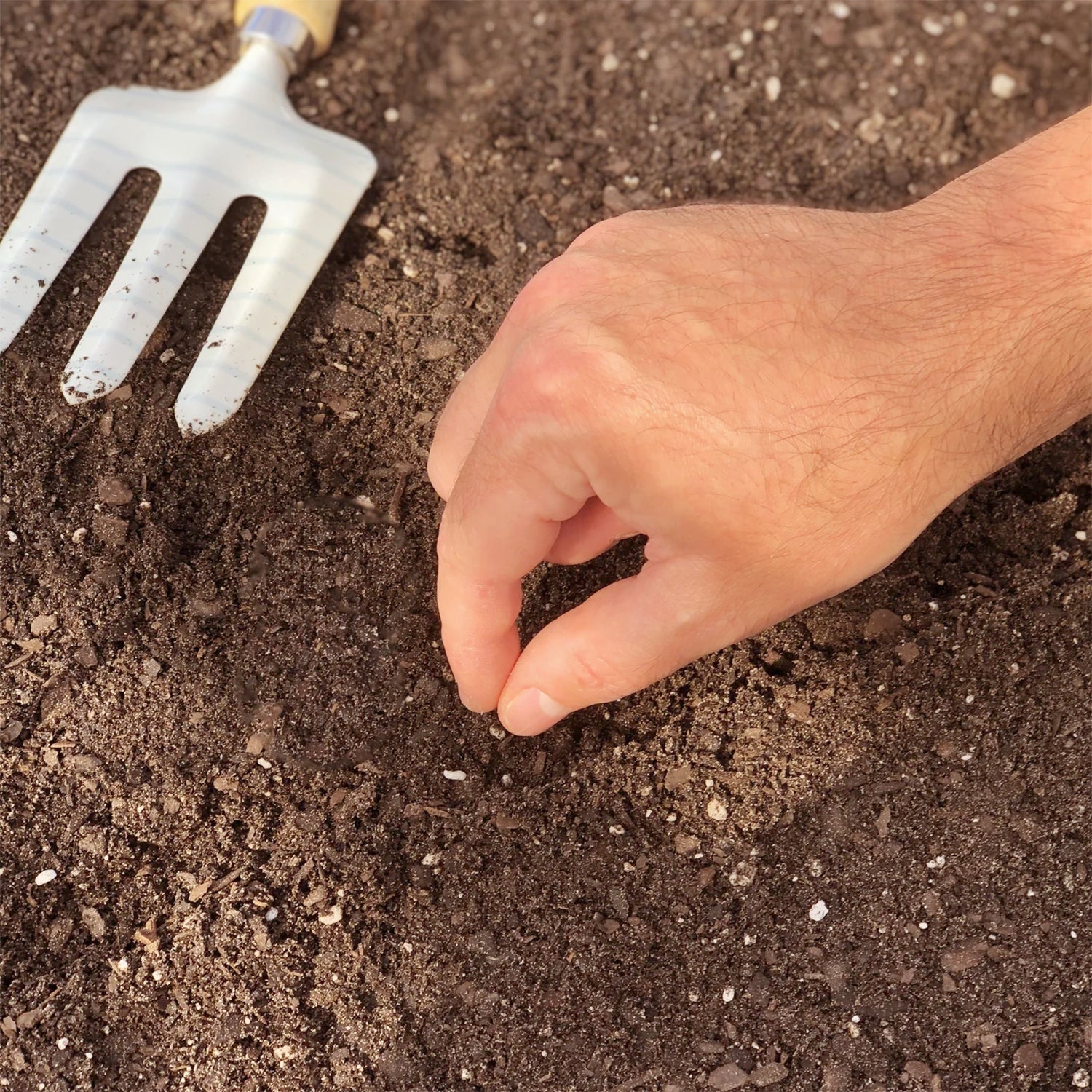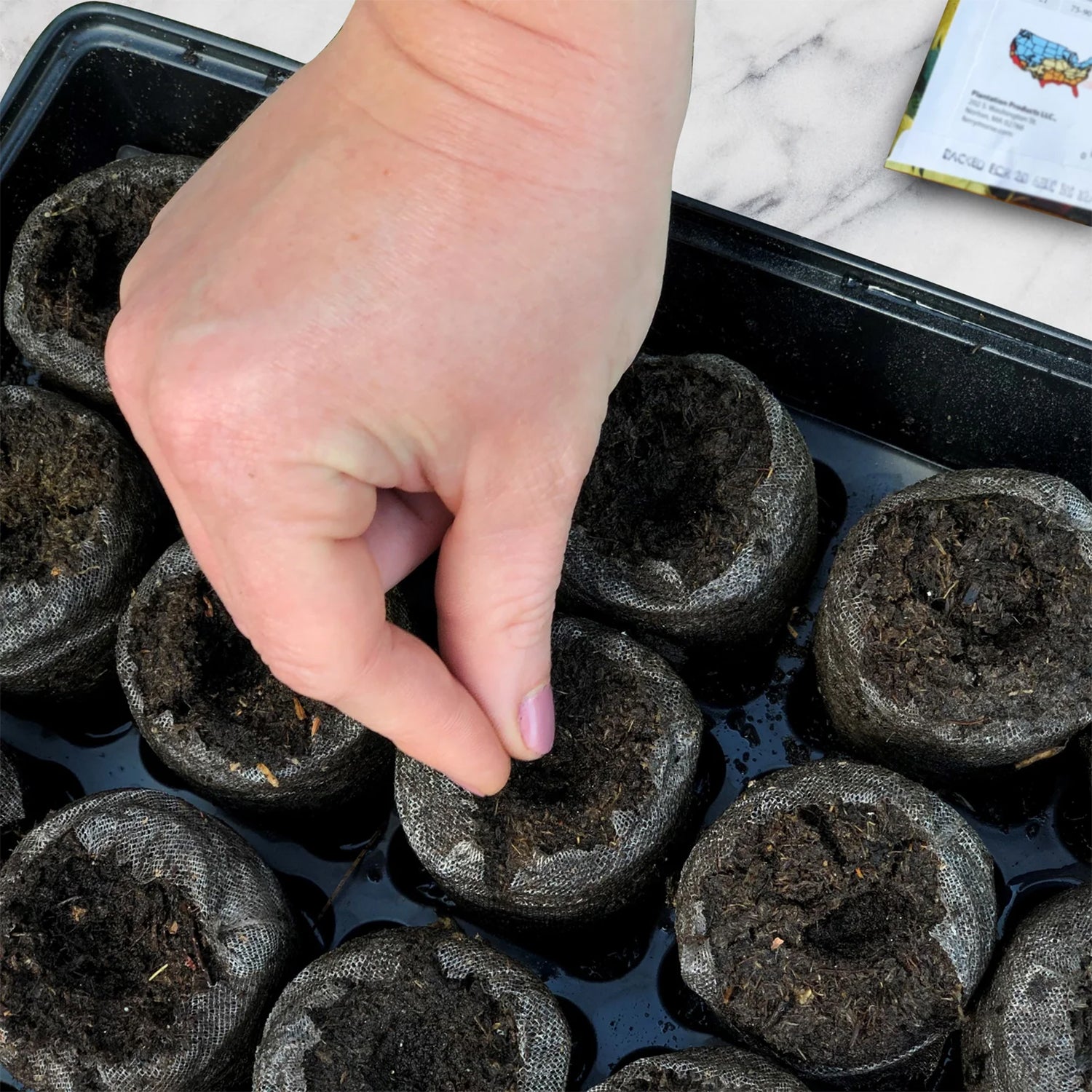Free Shipping On Orders $35+. View Offers >
Proudly Packaged in Canada
Tomato Seeds
Tomato, Jubilee Seeds
Earn 3 points for this item with our
rewards program.

Jubilee is an award-winning 226 g (8 oz) golden-orange fruit have a mild non-acid flavour.
These medium to large fruits are perfect for slicing and add a beautiful pop of color to salads, sandwiches, and salsas. Large, globular, and smooth with a meaty thick-walled interior.
Keep tomatoes away from all members of the Brassica family: cabbage, cauliflower, etc.
Indeterminate - staking is required.
- SKU: 143821
- Common Name: Tomato
- Botanical Name: Lycopersicon esculentum
Safe
for Bees
Good For Pollinators
Grows
Best In:
Days to
Germination:
Water
Needs:
Days to
Maturity:
Best
Container Size:
Growing Height:
- Plant Type: Vegetable
- Plant Lifecycle: Annual (plant every year)
- Seed Type: Heirloom
- Fill Weight (grams): 200 mg
- Approximate Seed Count: 70-75
- Characteristics: Attracts bees and pollinators
- Planting Method: Start Indoors
- Colour: Golden-orange
- Water Needs: Average 2.5-5 cm (1-2 in.) per week
- Landscape Use: Edible Garden
- Growth Habit: Indeterminate - staking is required
- Companion Planting:
Plant near asparagus, basil, calendula, dill, garlic, nasturtiums, onions, parsley, thyme. Calendula serves as a deterrent for common garden pests. Asparagus acts as a repellent for nematodes. Basil is effective in repelling whiteflies, mosquitoes, spider mites, and aphids. Additionally, basil attracts bees, which enhances pollination, improves the health of tomatoes, and enhances their flavor. Dill creates an environment that makes it challenging for cutworms to lay their eggs and also supports parasitic wasps that prey on pest caterpillars. Lastly, thyme reduces the egg-laying activity of armyworms.
- Awards: All America Selections (AAS) 1943 Winner
Start tomato seeds indoors 6 to 8 weeks before the last frost in your area. Follow the seed depth and spacing guidelines indicated below. Once all danger of frost has passed, seedlings should be hardened off before planting in their growing location. Seedlings should be transplanted according to the plant and row spacing directions below. Transplant seedlings into the garden once the soil temperature has reached 15°C (60°F). Pick a location sheltered from the wind. Regularly monitor your plants and ensure that the soil remains moist , but not soggy while they establish themselves in their new environment.
- Planting Depth: 6 mm (1/4in.)
- Seed Spacing: Sow tomato seeds roughly 2.5 cm (1 in.) apart in rows, keeping rows approximately 90 cm (36 in.) apart.
- Plant Spacing: 60-90 cm (24-36 in.)
- Instructions for Nutrient Care: Apply SUPERThrive once per week. Soak in solution of 1/4 tsp per gal for 15 min. or longer depending on size and type.
- Jubilee is an indeterminate tomato meaning staking is required.
- Tomato plants need a lot of water to produce big, juicy, flavorful tomatoes! Consistent moisture is essential for best results. If tomatoes do not receive consistent moisture, the skins will split or possibly develop blossom end rot. Always water plants at the oil level; this strengthens the root system and avoids foliage disease.
- Spread mulch around the base of the plant to prevent soil from splashing onto the fruit as this can lead to disease in the tomatoes.
- As your tomato plants grow, you will notice new small stems sprouting from the point where the main stem connects to the larger branches. These small stems are called in suckers in and they tend to drain a lot of energy from your plant. To help your tomato plants grow faster and produce amazing tomatoes, it is recommended you remove these suckers by pinching them off with your thumb and forefinger. By doing so, your tomato plant will be able to allocate more energy to the growth of the main stem, resulting in better tomato production.
- If you plant your seedlings deeply, it will encourage the growth of roots from the main stem. Sometimes, tomato plants tend to grow tall and may fall over, even in their initial stages. To avoid this, plant them just deep enough so that the bottom set of leaves is 2.5-5 cm (1-2 in) above the soil surface. Some gardeners prefer planting their tomatoes on their sides, which helps to spread the root system over a larger area, strengthen the main stem, and straighten it toward the sun.





Tomato, Jubilee Seeds
Register to receive a notification when this item comes back in stock.
Thanks! We'll let you know when this item is back in stock.
You may also like

Join our rewards program today to start saving!

Free Shipping on orders over $35

There are a ton of ways to earn!








